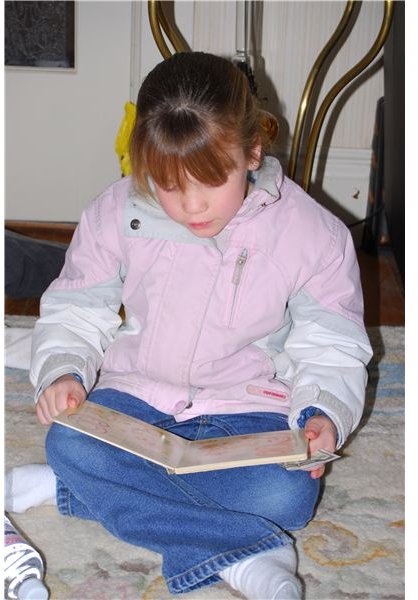Preschool Interactive Reading Activities
Reading with Preschoolers
The best way to get a preschool child excited about reading is to make it interactive and exciting. Often, preschool teachers feel stuck in a rut of circle time story reading and may have difficulty thinking of ideas to breathe new life into read aloud story time. Preschool interactive reading methods include anything from reading a book with rhyming text and encouraging the children to guess the rhyming words, to using rebus stories and other illustrated visual clues to encourage group participation.
Like any good preschool lesson, interactive reading lessons take time to prepare and may require several tries before they begin to feel easy. If children are used to sitting still, legs crossed while you read a story to them, it may take some time for them to warm up to the idea of being active participants in story time. When planning these preschool interactive reading activities, keep in mind that children learn best when the material presented to them is developmentally appropriate and is relevant to their lives and interests.
Interactive Reading Methods
Rhyming Text: Stories with rhyming text are an excellent way to begin using an interactive circle time in your classroom. Dr. Seuss books are essential when discussing rhyme, as his books are engaging and fun with nonsensical story lines and simple illustrations. After reading a few pages of text, pause dramatically at the end of a sentence without saying the last word on the page. The pause, coupled with a quizzical look on your face, will usually cause children to want to finish your sentence for you. When they guess the right rhyming word, continue reading. Try the game again on the next page and continue until providing the word at the end of the page becomes second nature to your class.
Rebus Stories: Transcribe a simple picture book text onto a sheet of chart paper. Pick out the words that repeat most often and instead of including the word, draw a simple picture to represent it. The Big Hungry Bear by Don and Audrey Wood is a good book to try this method with. Draw simple pictures for the words “bear”, “mouse” and “strawberry”. Choose one child or a co-teacher to flip the pages of the book while you read the text from the chart paper. Encourage children to read along with you by joining in on the picture words.
Visual Cues: Some picture books have illustrations that make the text very easy to understand. One of the best examples of this is in the book Quick as a Cricket by Don and Audrey Wood. In this story, a young boy sees himself as a mixture of many different animals. Each page illustrates the boy interacting with a different animal. When reading this book to children, pause at the end of each sentence to give the children the chance to fill in the name of the animal. For example, “I’m as hot as a….(fox)” or “I’m as loud as a…(lion)”.
Wordless Picture Books: Wordless picture books can be a wonderful way to explore preschool interactive reading methods. Asking children what they see in the picture, brainstorming what a character may be feeling just by studying their body language and facial expressions and using visual illustration cues to predict what may happen next can all be explored using wordless picture books. Some excellent examples of wordless picture books are Tuesday by David Wiesner, Goodnight, Gorilla by Peggy Rathmann and Good Dog, Carl by Alexandra Day.
Adding Movement: A sure way to engage preschoolers in read alouds is to include a movement activity along with the book presented. For example, if you are reading the tale of the tortoise and the hare, give each child the chance to act out the parts of the two characters. The rest of the class can cheer on the racers until it is their turn to become one of the players. Try this with the book In the Tall, Tall Grass by Denise Fleming. Each page is brightly illustrated with pictures of insects, birds and other wildlife that lives in the grass. Children will enjoy moving their bodies like caterpillars, bunnies and hummingbirds.
Involving your preschoolers in reading activities is a surefire way to instill in them a love of reading. Try these preschool interactive reading ideas and make circle time your preschooler’s favorite activity of the day.
Photo Credit: Gracey https://morguefile.com/archive/display/104729
Reference: “More Than the ABC’s: The Early Stages of Reading and Writing”; Judith A. Schickedanz; 1994
